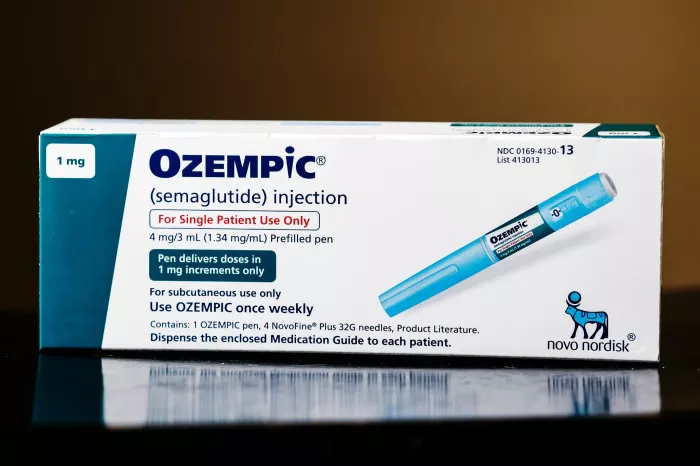Scars. They are an inevitable part of the surgical journey, often serving as a lasting reminder of the process our bodies go through to heal and recover. While scars are a natural outcome of surgery, the good news is that there are various treatments available to help minimize their appearance and promote optimal healing. In this comprehensive article, we will explore the best treatments for scars after surgery, shedding light on both traditional and cutting-edge approaches that can make a significant difference in the way your skin heals.
Understanding the Science of Scars
Before delving into the different treatments for scars, it’s crucial to understand the science behind scar formation. Scars are the body’s way of repairing and replacing damaged tissue after an injury or surgical procedure. When the skin is injured, whether through surgery or other means, the body initiates a complex process of tissue repair.
This process involves the production of collagen, a fibrous protein that acts as a scaffolding for the new tissue. The body doesn’t always produce collagen in a perfectly organized manner, leading to the formation of scars. The appearance and severity of scars can vary widely, depending on factors such as genetics, wound location, and the individual’s healing process.
Immediate Post-Surgery Care
The journey to scar-free healing begins immediately after surgery. The initial care you receive can significantly impact the final appearance of your scars. Surgeons and medical professionals play a pivotal role in minimizing scarring by employing various techniques during and after surgery.
One of the key strategies is proper wound closure. The choice of sutures or staples, the technique used, and the precision of closure all affect scar formation. Surgeons aim to create as minimal tension as possible on the wound edges, as excessive tension can lead to wider and more prominent scars.
The Role of Dressings and Topical Treatments
After the surgical wound is closed, attention turns to post-operative care. Dressings and topical treatments are commonly used to promote optimal healing and minimize scars. These products play a crucial role in creating a favorable environment for the skin to regenerate.
Silicone gel sheets are a popular choice for scar management. These sheets are applied directly to the scar and help to hydrate and flatten it. Silicone gel works by creating a barrier that helps retain moisture, which can improve the overall texture and appearance of the scar.
Embracing the Power of Massage
As your surgical site continues to heal, massage therapy can be an effective way to reduce scar tissue formation and improve the appearance of existing scars. Scar tissue tends to be less pliable than healthy tissue, which can lead to tightness, discomfort, and even limited range of motion.
Regularly massaging the scar tissue can break down collagen fibers and encourage more uniform collagen production, resulting in a softer and less noticeable scar. However, it’s essential to consult with your surgeon or a qualified physical therapist before starting scar massage, as improper technique can potentially worsen the scar.
Innovative Approaches to Scar Management
While traditional methods like dressings, silicone gel sheets, and scar massage have proven effective, innovative approaches to scar management have emerged in recent years. These advancements offer new hope for individuals seeking the best treatment for scars after surgery.
Laser therapy is one such innovation that has gained popularity in scar management. Various types of lasers, such as fractional lasers and pulsed dye lasers, can be used to target and break down scar tissue while stimulating collagen production. Laser therapy is particularly effective for hypertrophic and keloid scars, which are raised and often itchy or uncomfortable.
The Role of Medical Grade Skincare
In the quest for the best scar treatment after surgery, the importance of skincare cannot be overstated. Medical-grade skincare products, designed to improve skin health and appearance, have become increasingly integral to scar management.
Products containing ingredients like vitamin C, retinoids, and hyaluronic acid can help promote collagen production, reduce inflammation, and improve overall skin quality. Integrating these products into your skincare routine can complement other scar management strategies.
When Surgery Requires Revision
In some cases, surgical scars may not heal to satisfaction despite diligent scar management efforts. This situation may necessitate scar revision surgery. Scar revision involves re-cutting and re-closing the scar to improve its appearance.
It’s essential to approach scar revision with caution and realistic expectations, as the outcome can vary. Consulting with a board-certified plastic surgeon experienced in scar revision is crucial if you are considering this option.
The Role of Genetics and Ethnicity
It’s important to acknowledge that genetics and ethnicity play a role in how scars form and heal. Some individuals are genetically predisposed to form more noticeable scars than others. Additionally, individuals with darker skin tones may be at a higher risk of developing hyperpigmented scars, known as post-inflammatory hyperpigmentation (PIH).
Understanding your unique risk factors and working closely with your healthcare provider can help tailor a scar management plan that is effective for your specific needs.
Non-Invasive Options for Scar Improvement
In recent years, non-invasive options for scar improvement have gained traction. These options are particularly appealing to individuals who want to avoid additional surgery or downtime.
Dermabrasion and micro-needling are two non-invasive techniques that can improve scar appearance. Dermabrasion involves the removal of the top layer of skin, while micro-needling uses tiny needles to stimulate collagen production. These treatments can be performed in-office and often require minimal recovery time.
The Importance of Patience and Consistency
Regardless of the treatment approach you choose, it’s essential to emphasize the importance of patience and consistency in scar management. Scars can take several months to even years to fully mature and reach their final appearance.
Consistency in scar care routines, whether through massage, skincare, or other treatments, is key to achieving the best possible outcome. It’s essential to work closely with your healthcare provider to monitor progress and make adjustments as needed.
Conclusion
Scars are a natural part of the healing process after surgery. While they may never completely disappear, the best treatment for scars after surgery involves a combination of traditional and innovative approaches that can significantly improve their appearance. Whether you opt for silicone gel sheets, laser therapy, skincare products, or non-invasive procedures, the goal remains the same: to help you feel more comfortable and confident in your skin as you continue your journey to scar-free healing.
In the end, scars tell a unique story of resilience and healing, and with the right care and attention, their impact can be minimized, allowing you to focus on the future rather than the past. Remember, your healthcare provider is your best resource for guidance on the most suitable scar management plan for your specific needs. Embrace the journey, and may your scars fade into the background as you move forward with confidence.
[inline_related_posts title=”You Might Be Interested In” title_align=”left” style=”list” number=”6″ align=”none” ids=”2651,2655,2539″ by=”categories” orderby=”rand” order=”DESC” hide_thumb=”no” thumb_right=”no” views=”no” date=”yes” grid_columns=”2″ post_type=”” tax=””]



































